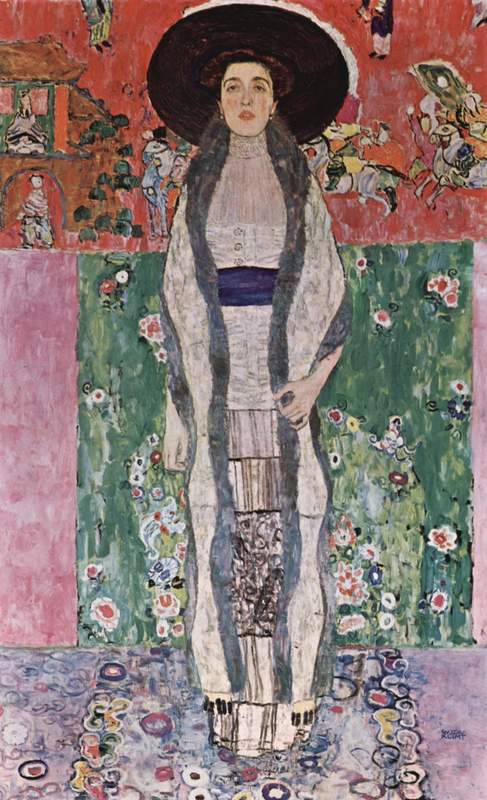|
Click here for our review of "Obsession: Klimt, Schiele and Picasso from the Schofiled Thayer Collection" at the Met Breuer in New York City.
The centerpiece of the Neue Galerie is the Klimt Gallery on the second floor. This room is home to ten or so works by Gustav Klimt. While there are many interesting works in the Neue Galerie, this is where you find the most visitors.
Undoubtedly, Klimt is the best known of the Austrian and German artists featured in this museum. But what makes his art successful? Klimt was born in 1862 outside of Vienna. His father was an engraver often working with gold but Gustav grew up in poverty. He received his artistic training at the State School of Arts and Crafts as did his brother Ernst. The teo brothers formed a partnership with fellow artists Franz Matsch and found their first success doing conventional history paintings. Gustav was not satisfied with conventional art. Therefore, after Ernst's death, Gustav became a founding member of the Vienna Secession, a group who sought to break away from the rules of the art establishment of the day. Nonetheless, his unconventional style was appreciated by Vienna's growing middle class who commissioned him to do portraits. On the surface, Klimt's private life might appear to have been conventional. All his life, he lived in an apartment with his mother and two sisters. After Ernst died, he became the guardian for his niece. He never married. But when you look a little deeper, you find that surface appearances can be deceptive. When Gustav died in 1918, the court handling his estate received 14 petitions for child support. The court concluded that three of these were proven. Such claims were consistent with the widespread rumors that Gustav had had numerous affairs with his models as well as with some of the rich ladies whose portraits he had painted. In the studio, he dressed only in a loose robe and there were tales of models cavorting between posing for erotic drawings. Thus, Klimt was both an artistic rebel and a very sensuous individual. These are also the hallmarks of Klimt's best works. The superstar painting of the Klimt Gallery is “Adele Bloch-Bauer I” This painting was the subject of the popular film “The Woman In Gold” but that is not the only reason people stop and linger in front of it. It is not a conventional portrait. Indeed, only the sitter's head, shoulders and hands are easily discernible. The golden gown that covers the rest of her body blends into the background. It is a two dimensional picture full of decorative designs and geometric patterns. Yet, the various elements of the picture come together to support the face, which dominates the sea of gold. The face is not classically beautiful but it is attractive. Her eyes are soulful and her red lips sexual. It was believed at the time that Adele was one of the women with whom Gustav had an affair. His painting “Judith,” which Adele also posed for, certainly suggests that their relationship was more than platonic. Returning to the portrait, this face surrounded by sumptuous gold leaf makes the work very sensuous. Also in the Klimt Gallery is “Adele Bloch-Bauer II,” a slightly later portrait of the same person. It does not have the gold work of the earlier portrait and thus is not as bold. The figure is more conservatively dressed in what was probably a daytime outfit and stands out more than in the predecessor painting. Still, it is an unconventional portrait, Once again it is two dimensional. Colorful rectangles decorated with Japanese-inspired designs make up the background. The figure is not posed provocatively but rather she is straight as a pillar. Nonetheless, her sensuality comes through in her face through Klimt's handling of the eyes and the lips. She is portrayed intriguingly but with a touch of innocence. On the same wall is “The Dancer,” which is similar in dimensions and in composition to “Adele Bloch-Bauer II”. It is perhaps more colorful and more flesh is more exposed but it works for generally the same reasons. Most of the other pictures in the Gallery are landscapes. They recall works done by the Impressionists and the Post Impressionists and would have been unconventional at the time they were painted. However,without the human figure there is little sensuality and therefore less interest. |
AuthorRich Wagner is a writer, photographer and artist. Archives
November 2018
Categories
All
|


 RSS Feed
RSS Feed